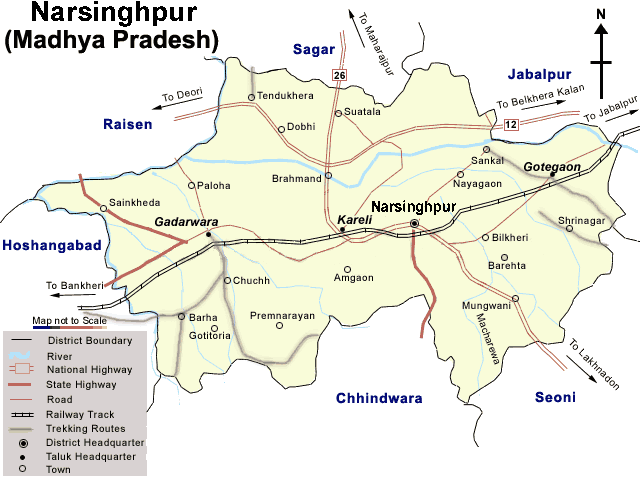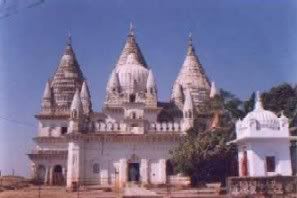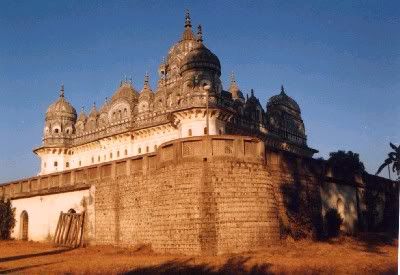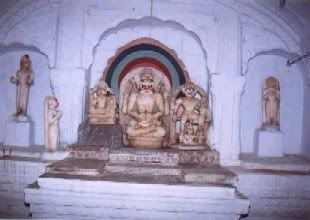Narsinghpur: The Place Situated At the Geographical Center of India
Narsinghpur has been named after the name of lord Narsimha and was initially spelled as Narsimhapur. Narsimha avatar was an incarnation of lord Vishnu when he adapted a typical form of a huge strong human with lion's head, for eliminating an evil entity called
Narsinghpur: A Place Situated At the Geographical Center of India
Introduction
Narsinghpur district is situated in the central part of Madhya Pradesh. Madhya Pradesh, as its name depicts, is located in the geographical center of India. As such Narsinghpur holds a special significance being located right in the centre of India.
Narsinghpur has been named after the name of lord Narsimha and was initially spelled as Narsimhapur. Narsimha avatar is believed to be an incarnation of lord Vishnu when he adapted a typical form of a huge strong human with lion's head, for eliminating an evil entity called 'Hiranya Kashyapu', a self-proclaimed God and father of lord Vishnu's devotee Prahalad. 
Map of Narsinghpur
District Administration:
Narsinghpur is a district place having Collectorate, District and Sessions court, District police head quarters and District headquarters of PWD, Health, Education, revenue, sales Tax, Income Tax, and all other departments of state and central Governments for running the administration in this district.
Education:
Narsinghpur has Many Colleges, Polytechnics, ITIs, and Basic Training Institutes for imparting education to teachers.
Banks:
Almost all the banks have opened their branches in this town. Automobile marketing showrooms have also opened here.
Health:
Narsinghpur has a district hospital and many other smaller health units called Primary Health Canters in smaller places in the district. There are other private hospitals and nursing homes with multyspeciality facilities and infrastructure for minor hi-tech surgeries.
Progress:
Narsinghpur has a history of becoming a district from the status of a Tehsil and again reverting back to Tehsil. Eventually it is continuing to be a district for past many decades.
As far as progress is concerned, Narsinghpur is lagging behind the smaller neighborhood towns like Kareli and Gadarwara
Cultural Inheritance:
1. About 10 k.m. Away from Gadarwara , in a village called Barahata "fossil of animals " & and ancient tools made of stones are found during various excavations.
2. In other places like Devakachhar, Dhubghat, Kumadi, Ratikarar & Bramhanghat many caves in rocks depicting architecture of ancient times are found.
3. Bilthari village of block chanwarpatha is believed to be previously known as Balisthali. This place was known as king Bali's place.
4. It is said that pandvas had spent some period of their exile at this place, which is confirmed by places like Bhim Kund & Arjun Kund.
5. Village Barhata of this district is a remnant of Virat Nagar of Mahabharata period. various ancients structures & architectural remains have been found in this village leading to conclusions that this area was a part of Mahabharata period.
6. An ancient's rock with the shape of a human being is related with "keechak" near village Bachchai.
History in brief:
1. The area of Bohani is related to Jasraj, the father of Aalaha Udal and their uncle Bachraj, who were kings during the period of king Prithavi Raj Chouhan.
2. Satvahan period: During second century this area was under the rule of Satvahans. Form 4th century the area went under the Gupta Dynasty, during which king Samudra Gupt extended his kingdom in central and western India in 6th century.
3. In 9th century Kalchuri Dynasty was established here. The capital of Kalchuri Rajvansh was Mahishmati Nagari near river Narmada which was later shifted to Tripuri.
4. As per the records of history books. Kalchuri kingdom was expended between Gomati River to Narmada River. After the fall of Kalchuri kingdom, the area went under the control of the father and uncle of Aalh Udal who declared Bohani as their capital.
5. Rajgond Vansh: After the establishment of Rajgond Vansh an area of peace & prosperity began in this area. This dynasty was initiated by Yadav Rao who laid the foundation of a strong kingdom at a place called Garha Katanga and initiated the process of a strong mighty rule.
6. One of the rulers Sangram Shah (1400-1541) established 52 forts called Garhs.
7. The fort of Choura Garh (Chougan) at Narsinghpur was constructed by Sangram Shah,
8. Among the successors of Sangram Shah, Dalpat Shah ruled the kingdom for a period of 7 years successfully.
9. Thereafter, Queen Durgawati took over the reign and proved her courage and bravery by ruling the kingdom for a period of 16 years (1540--1564).
10. In year 1564 the queen died during a tough fight against Asif Khan the Sepoy Salar of Emperor Akbar and her son Veer Narayan succeeded her as the king.
11. At the fort of Chauragarh Asif Khan trapped prince Veer Narayan & killed him by his cunning tactics. Thus Garha Katanga came under the rule of moguls in the year 1564.
12. After Gonds and Moguls these small kingdoms were captured by various small Maratha kings.
13. Bhonsle rulers: in year 1785, Madhavji Bhonsle purchased the area of Mandla & Narmada Ghati in 27 lakhs. The people of this area were continued to be victims of inhuman oppression and injustice due to frequent change of rulers like Radhoji Bhonsle, Nawab Of Bhopal & Pindaris until 1817 when British rule came into existence.
14. British Period: after the Battle of Sitabardi, this area come under the control of British Rule in the year 1917.
15. The Gond Jagirs were under Marathas, where as Sindhiyas had given Barha & Paloha Jagirs to Pindari Sardars, Chitu & Karim Khan.
16. In the year 1818 British Army captured the Fort of Chouragarh and in 1830 the control of this area was transferred to a British Committee.
17. During British Rule the administration of this district was improved and in 1836 the area was merged in Hoshangabad district.
18. But after Bundela Revolt in 1843 this part was once again merged back with this district.
19. Struggle for Independence: despite strong British Rule the desire for independence was prevalent among the common people. In 1857 the police station of Chawarpatha & Tendukheda were captured by revolutionaries under the leadership of Gond Chief Delanshah of Nadanpur. With this the struggle for independence was started in this area.
20. But in the year 1858 Delanshah was captured by British authorities and was hanged to death.
21. Congress Movement: after the establishment of Indian National Congress in the year 1885 and in this district the desire for independence was spread. Eventually the independence movement continued until 1947.
Monuments and Temples
Narsimha Temple:
During the 18th century this temple was constructed by Jat Sardars and a statue of Lord Narsimha (the Human Awtar of Lord Vishnu having Loin's head) was installed. This is situated at Narsinghpur town.
The specialty of this temple is that the idol of lord Narsimha has been installed at such an height and the plinth has such an architectural design that devotees even need not enter the temple for having 'the darshana' of the lord. They can even watch the idol right from the front road also.

Narsimha Temple

Narsinghpur Fort

Lord Narsimha Idol
------------------------------
Disclaimer:
This article / Story / fiction is written based on my personal observations. My intention for publishing the same is to provide healthy reading and intellectual entertainment and not for educating the visitors. Names of people, societies, communities and description of faiths, beliefs, incidents are imaginary and fictitious. They have neither any relevance to the prevailing entities and traditions nor have any similarities with ongoing lifestyles, political ideologies and legal doctrines. The contents of this creative work has not been written with any intention to criticize, condemn or oppose anything what-so-ever present in reality in any country in the world. No literature or authentic books have been referred for writing the contents of this article. The visitors are advised not to refer the contents of this article for any research or testimony on scientific, geographical, political, civic or legal purposes. The visitors are further advised to consult relevant experts before adapting any information from this article. The author or the website are not responsible for any errors, mistakes, or omissions there in.
- Harish Jharia
---------------------------------





